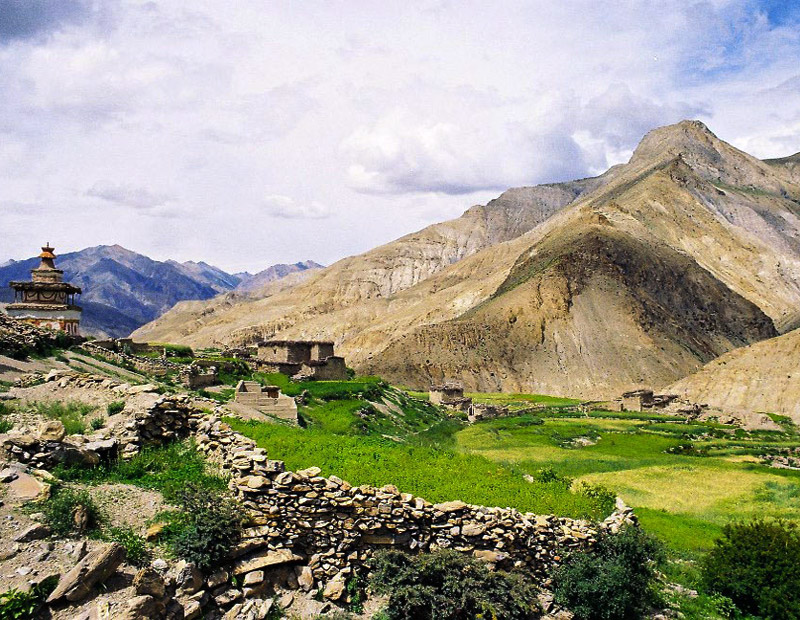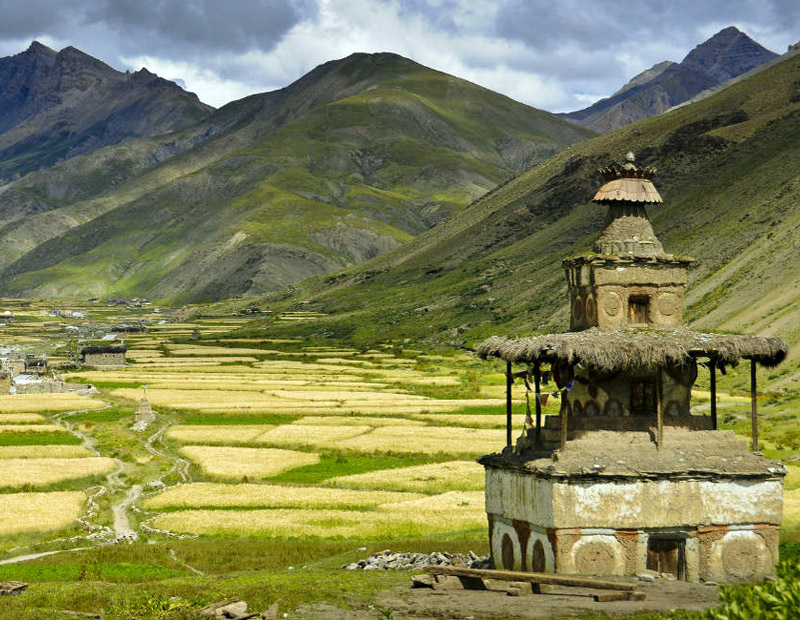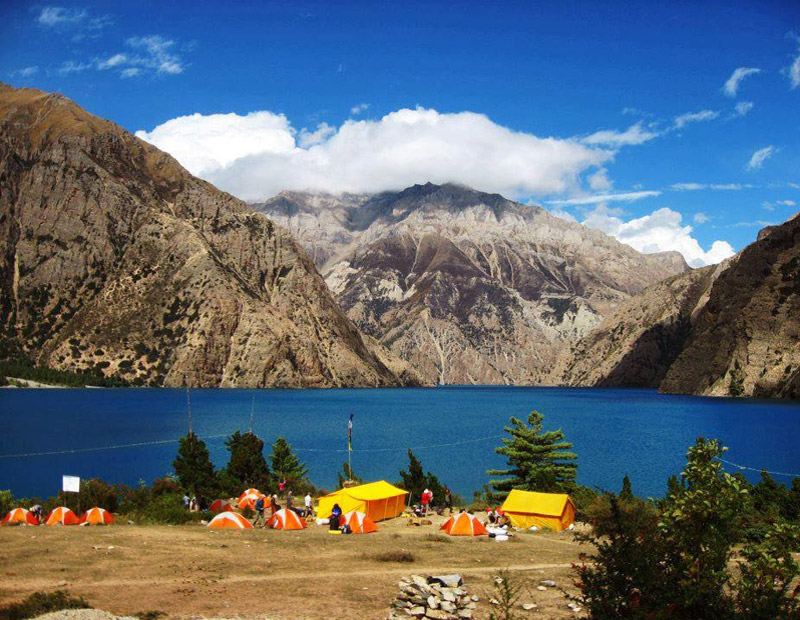The name Dolpo has a romantic ring to it. This is, after all, the so-called Hidden Land - high remote and windswept, ticket away in the mid-west region of Nepal beyond Dhaulagiri on the largely monsoon-free side of the Himalayan Divide. Claimed to be the highest inhabited land on earth, Dolpo to Dolpa bears little resemblance to the more populous valleys of the Nepal Himalaya generally visited by western trekkers and mountaineers. In that lies some of its charm.
Guarded from the rest of the country by mountain crests sliced by deep and narrow gorges, the way of the Dolpo reflects a Tibetan culture rather than one of Nepalese identity. Some of the women are polyandrous, perhaps married to two brothers - one of whom stay at home and tends the land while the other is a trader, journeying over the range to the north, then back to the southern rim of the country with a string of yaks or goats carrying panniers of salt and wool form Tibet and returning with grain or flour.
The land of the Dolpo is harsh and uncompromising. But it had unquestionable beauty too. Villages consist of sturdy, stone-built houses clustered close together, their windows little more than narrow slits, their room flat-topped and stacked at the end of the harvest with the produce of their fields. In almost every valley will be found fascinating gompas (monasteries) dedicated to the Bonpo sect of Buddhism, a factor that brought about the region’s first real exploration by westerners in 1956, the Buddhist Scholar Bavid Snellgrove.
It is a magnificent trek, with countless scenic and cultural variations, that deserves to become one of the classics of Nepal although the very remoteness that forms part of Dolpo’s essential charm also means that only the most determined of trekkers will attempt it.
Best Time for Dolpo Trekking:
Since much of Dolpo rests in the rain shadow cast by Dhaulagiri, effects of the monsoon are not as extreme as experienced further east. It is therefore possible to trek there during the summer, as well as in the normal pre and post-monsoon trekking seasons. Problems are likely to be encountered, however, in travel to and from the region during the monsoon months. Winters are notoriously cold and with very heavy snowfalls, so November through till spring should be avoided. During these months Dolpo is often cut off from the rest of the Nepal. The best months for Dolpo trekking are probably August, September and October.
Flora and Fauna of Dolpo
The lower valleys that form a rim to the high lands of Dolpo proper are clothed with pine and cypress groves. Stands of willow and popular are found alongside rivers and tributary streams, while fairly dense woodlands of oaks and walnut will be seen in valleys to the west of the Kagmara La. In mid-hight valleys blue pine, spruce, birch and tree junipers grow on favoured sites.
Trekkers who visit only in the late autumn will gain an impression of an almost barren land. However, wild rose and berberis, dwarf buckthorn and yellow-flowered caragana dot the upper valleys, and in the summer months the botanist, Chtistopher Grey-Willson, reported a surprising wealth of alpine including gentians, asters, pin and white saxifrage, potentillas and dwarf rhododendron.
As for wildlife, the snow leopard would be a prize for anyone to see. Although Dolpo is a noted habitat they remain elusive to all but the most patient and diligent of seekers. Blue Sheep (bharal) are much less elusive than the snow leopard, and there is a good chance of catching sight of small groups of these, especially in the Tarap gorges, below the Baga La, and between Pungmo and the Kagmara La. Rhesus and langur monkeys inhabit the lower forests areas. Musk dear and Thar are also found in and around the edge of Dolpo, and wolves are known to roam up to 6000 metres. Marmots and mountains hares are not uncommon.
Nepal's national bird, the Impeyan Pheasant, is resident here, as in so many other parts of the country. The brown dipper many be seen flashing along water courses, while chough, raven, Himalayan griffon vulture and the majestic lammergeier with its enormous wing-span, can often be seen spiralling slowly over some remote valley or mountainside.







Getaway Nepal Adventure (P.) Ltd
Thamel Kathmandu, Nepal